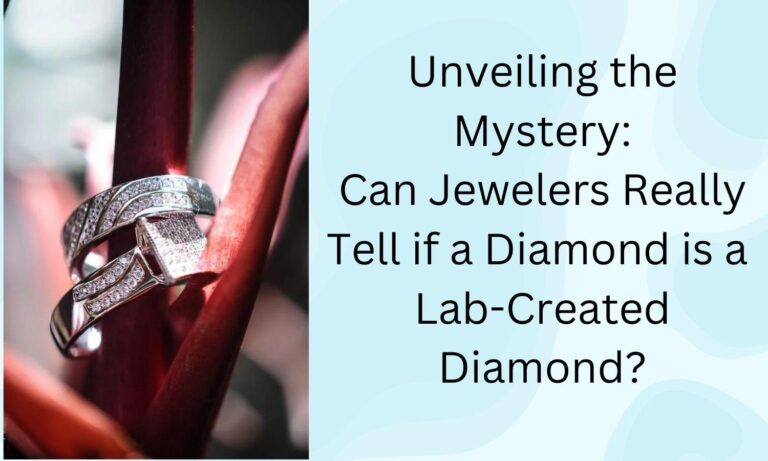Diamond is a material that is composed of pure carbon. It is known to be the hardest naturally-occurring substance in the world. It is also the most popular gemstone. Besides being an accessory, diamonds have many important applications because of their hardness.
Diamonds vary in color, they could be colorless to black. They can also be opaque, transparent, or translucent. Diamonds also have high refractive power that gives diamonds extraordinary brilliance.
A diamond is naturally formed by having immense pressure and temperature placed on it. This will then form within a span of one billion years to three billion years.
But, a new way of forming diamonds was developed in the 1950s. This was the result of a successful experiment by the company General Electric. Today’s lab created diamonds are the result of decades of work by researchers around the world.
Lab-made diamonds are made by mimicking how a natural diamond is made under the Earth’s mantle. This type of diamond can now be made within just one to two weeks compared to a natural diamond.
A lab created diamond is typically 40% to 60% cheaper than natural diamonds. This is because a lab diamond is much more efficient and cost-effective compared to a natural diamond. Several jewelers have switched from natural diamonds to laboratory-created diamonds as a result of the environmental damage natural diamond mining has caused.
This is also why Clean Origin specializes in producing ethically made lab grown diamonds.
Lab-made diamonds and natural diamonds are the same stones. But, the lab diamonds have turned the traditional diamond industry upside-down.
A Quick History of Lab-Grown Diamonds
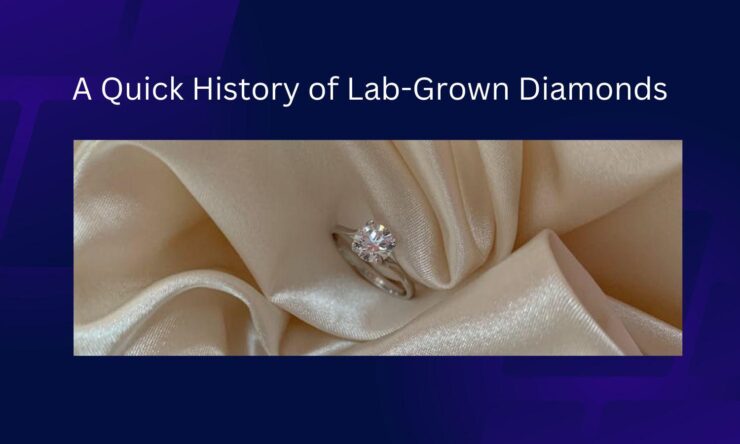
Lab diamonds have the same chemical, physical, and optical properties as natural diamonds. The only difference is, lab diamonds have greater affordability and have ethical sourcing.
The company General Electric created the first proven synthetic diamond in 1954. The project started in the 1940s but was put on hold because of World War II.
Man-made diamonds which are suitable for industrial use were introduced in the 1950s. Gem-quality diamonds however were produced in a lab for the first time in 1971. It was in the mid-2010s when colorless lab-grown diamonds entered the jewelry market.
Scientists spent years experimenting with different methods to create a synthetic diamond. They also used different temperatures and pressures to create diamonds from carbon.
Today’s laboratory-created diamonds are made in two different ways. One is through high pressure, and high temperature (HPHT). The other one is chemical vapor deposition (CVD).
High Pressure, High Temperature (HPHT)
Labs produce diamonds this way by mimicking the high-pressure and high-temperature conditions that create natural diamonds. This method produces a distinctly shaped laboratory-grown diamond.
Chemical Vapor Deposition (CVD)
This method involves breaking down the molecules of a carbon-rich gas. Methane is such a gas and is broken down into carbon and hydrogen atoms. They are then deposited on diamond seeds to produce square-shaped, tabular diamonds.
Creating diamonds by using either method would typically require less than a month for most sizes. Most CVD-created diamonds however would require additional treatments like heat or irradiation. This will enhance or change the color of the diamond after the growth process.
Can a Jeweler Identify a Lab-Made Diamond?
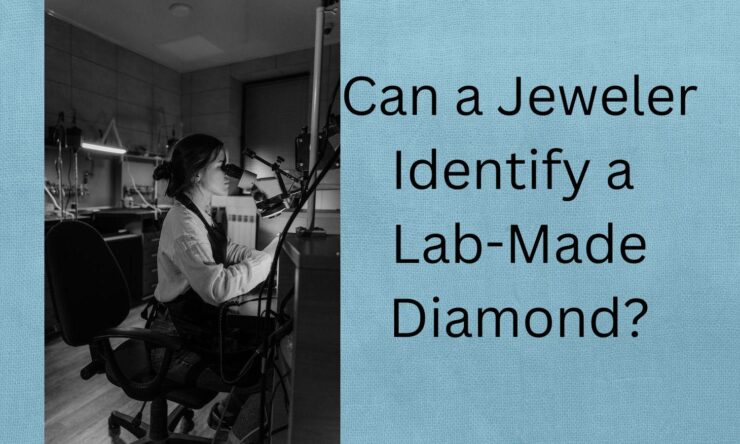
People always ask whether a jeweler could tell if a diamond is created in a lab. Lab-created diamonds and natural diamonds are anatomically the same. They are also the same chemically and physically.
The simple answer is no. A jeweler can’t identify a natural diamond from a lab-created diamond just by the naked eye alone. Tools like microscopes and loupes can’t even tell natural and lab-grown diamonds apart.
Diamond Testers
A tool called diamond testers is used to distinguish real diamonds from fake diamonds. They differentiate them by observing their thermal and electrical conductivity.
However, this test will not work when distinguishing if a diamond is lab-made or naturally-made. This is because lab-grown diamonds are not fake diamonds. This type of diamond is real and can pass thermal and electrical conductivity tests.
Diamond Certification
One way to identify whether a diamond ring is natural or lab-made is by seeing if it is diamond certified. Before purchasing a diamond wedding ring or a diamond earring, make sure that it is certified by an independent diamond grading laboratory.
This certificate will indicate whether your diamond accessory is a natural one or a lab-created one. This is one of the easiest ways to differentiate between the two types of diamonds.
Lab-made and mined diamonds often have a microscopic laser inscription on them. The number on the diamond should match the number written on the certificate. This is how you can be sure that your diamond is as described in the certificate.
A lab created diamond will have the initials LG on it before the engraved numbers. This is how you will identify it as lab-grown. A jeweler will be able to see this by using a 30x jeweler’s loupe.
Diamond Types
A scientific way of classifying diamonds based on their physical properties and the color is called diamond types. This method is important because this helps in differentiating between natural, lab grown, and treated diamonds.
This method is divided into two separate categories, type I and type II diamonds. Each category is then divided into two more sub-categories named type Ia, type Ib, type IIa, and type IIb.
Type I Diamonds
Type I diamonds are known to be the most common ones. This type of diamond contains nitrogen as its main impurity. The type I diamond has a 0.1% nitrogen composition.
Type I diamonds also absorb both infrared and ultraviolet regions. They also have a visible absorption spectrum and have characteristic fluorescence.
Type Ia
This type of diamonds make up about 95% of all the diamonds. The nitrogen impurities that are around 0.3% are clustered within the carbon lattice. They are also relatively widespread.
The diamond absorbs blue light because of the absorption spectrum of the nitrogen clusters. This makes the diamond appear pale yellow or almost colorless. Most type Ia diamonds are a mixture of IaA and IaB.
Type IaA
This is where the diamond’s nitrogen atoms are in pairs. This will affect the diamond’s color.
Type IaB
This is where the diamond’s nitrogen atoms are in large even-numbered aggregates. This makes the diamond’s have a yellow to brown tint.
TypeIb
This type of diamond makes up about 0.1% of all diamonds. This type of diamond contains 0.05% of nitrogen. But, the impurities are more diffused. This means that the atoms are dispersed throughout the crystal in isolated areas.
Type Ib diamonds have a more darker yellow or brown color than type Ia. They also absorb green light in addition to blue light. The rare canary diamonds belong to this type of stones. It represents only 0.1% of known natural diamonds.
The type Ib visible absorption spectrum is gradual. It also does not have sharp absorption bands. Almost all HPHT lab made diamonds are type Ib.
Type II diamonds
Type II diamonds on the other hand do not have any measurable nitrogen impurities. This type of diamonds absorb in a different region of the infrared. They then transmit in the ultraviolet below 225 nm unlike type I diamonds.
Type II diamonds also have differing fluorescence characteristics. This type of crystal tends to be large and irregular in shape. These types of diamonds were formed under extremely high pressure for longer time periods.
Type IIa
This type of diamond is the most chemically pure diamond and also has the highest thermal conductivity. Type IIa diamonds do not have measurable boron or nitrogen impurities. This type of diamond is often colorless or near-colorless.
Natural type IIa diamonds are extremely rare. There are approximately only 1% to 2% of naturally grown diamonds.
However, most lab-created diamonds are type IIa. A major indicator that a diamond is a lab-grown one is if it is a type IIa. This is because this type IIa is so rare in nature.
No jeweler can identify if a diamond is natural or lab-made by just using the naked eye. Tools are needed to ensure that a diamond is real. There are also other ways you can take to be 100% sure of what kind of diamond you have.
Type IIb
Type IIb diamonds are one of the rarest natural diamonds and are very valuable. This is because they only make up about 0.1% of all diamonds. Type IIb has very low nitrogen impurities. They also contain significant boron impurities.
The absorption spectrum of boron causes type IIb diamonds to absorb red, orange, and yellow light. This lends type IIb diamonds a light gray or blue color. Low levels of boron impurities can also be colorless.
How to Be 100% Sure of Your Diamond’s Origin
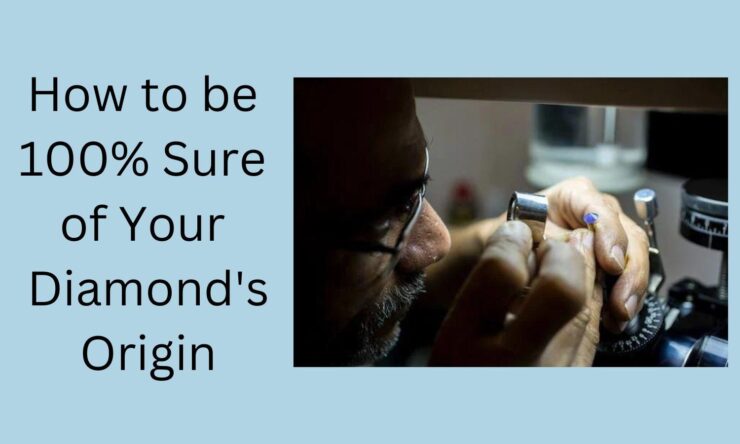
There are ways to take if you want to be 100% sure that your diamond is naturally-made or lab-created. This is by sending your diamond to a specialized gem lab for testing.
Gemological Institute of America
These organizations that focus on diamonds have created incredibly complex and sophisticated machines. These machines were created to answer the question of whether a diamond is natural or man-made.
They came up with creative names for these machines like a diamond check, diamond sure, and diamond view.
These machines work by bombarding the diamonds with a specific type of radiation that is harmless to humans. They will then analyze the diamond after the bombardment. Tell-tale signs will show up in the form of spikes and troughs at specific wavelengths in the spectroscopic analysis.
DiaTrue Machine
A cutting-edge technology that can be used to detect lab-grown diamonds is the DiaTrue machine. This machine is currently the fastest diamond detector out there. It is designed to identify natural, lab-made, and fake diamonds. It can also detect diamonds from wedding rings and earrings.
Laboratories have the right equipment and tools to detect lab-made diamonds. They also have some techniques to check for features that can distinguish lab diamonds.
Nitrogen
Lab created diamonds usually do not have any trace of nitrogen. Most natural diamonds however have small traces in them.
Inclusions
Lab and natural diamonds may have different inclusions from each other. Metallic inclusions can only occur on lab-grown diamonds.
Growth Patterns
Growth patterns are used to tell how a diamond is formed. Natural diamonds that took billions of years to form would show different growth patterns.
Fluorescence and Phosphorescence
Lab diamonds will glow yellow, greenish-blue, or orange when exposed to UV light. The glow will then stay even after the UV light is removed. On the other hand, Natural diamonds fluoresce blue and will not phosphoresce.
Benefits of a Lab-Grown Diamonds
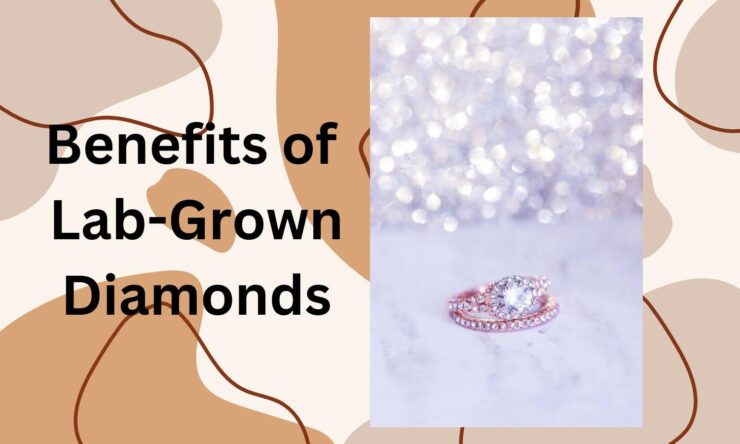
Lab made diamonds have a lot of benefits that work as their selling point. These pros includes the following:
Less Ethical Problems
Formation of lab diamonds is different from natural diamonds. Lab-grown diamonds get to eliminate most of the ethical issues that come with natural diamonds. Among these issues are terrorist funding, money laundering and environmental damage.
High Profit Margin and Low Prices
The cost of man-made diamonds is much less than mining natural diamonds. Mining and extracting diamonds from natural fields cost a lot for both machines and labour.
Improved Quality and Greater Purity
Lab created diamonds are purer than naturally mined diamonds. Unlike natural diamonds, lab-diamonds do not have any impurities or dirt mixed in them.
Lab-made diamonds are made under controlled conditions. This is why they have fewer defects and show fewer signs of strain in their crystal structure. Diamonds are brighter, better and whiter when their purity is improved.
Guilt-Free Composition and Guaranteed Origins
There are buyers who are quite particular on whether the diamond is ethically acquired or not. Unfortunately, the origins of most natural diamonds aren’t clear since they came from conflicted regions.
However, lab-made diamonds have clear histories while having a guaranteed clear and trackable source.
Various Colors and Affordable Price
Colored natural diamonds sell for high prices because of its rarity. But, thanks to technology, lab-made diamonds that have color are available for a fraction of the costs.
Lab-created colored diamonds are steady in color, pure and are easy to find. They also tend to be brighter in color and more perfect than natural colored stones.
Sustainable and Environmentally Friendly
Mining natural diamonds uses huge amounts of fossil fuel and also damages the earth substantially. None of these negative effects of mining diamonds apply to lab-made diamonds. Lab-diamonds are also a much more sustainable item than natural ones.
Lab-Made Diamonds and Natural Diamonds
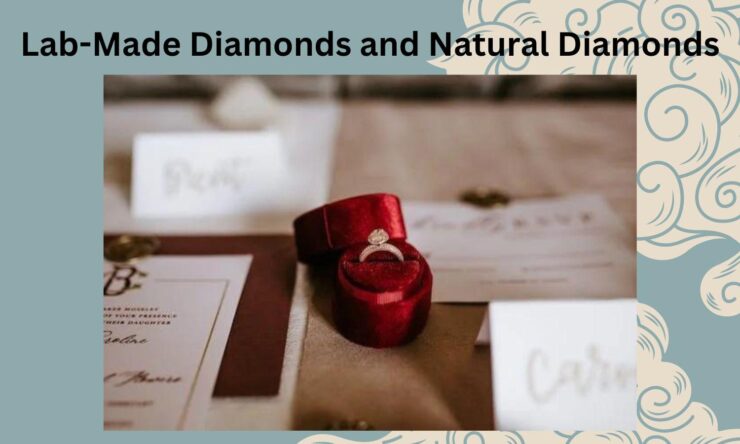
Natural and lab-created diamonds are both crystallized carbons. They are both crystal clear and give off kaleidoscope-like spectral colors when in direct light. However, one is billions of years old while the other one was just recently grown in a laboratory.
Both the naturally formed one and the man-made one are real diamonds. Natural diamonds were made by forces deep within the earth’s surface. Lab-created diamonds are made inside a laboratory but still possess the same chemical, physical and optical properties as natural ones.
We’re not surprised if you couldn’t tell the difference between a lab diamond and a natural one. Lab diamonds are created in high-temperature and high-pressure chambers. This reproduces the conditions in the earth’s crust.
The result is carbon atoms which are arranged in the structure of a diamond crystal. These are diamonds that are every bit magical as the ones that are created naturally for billions of years.
The diamond industry continues to evolve and keep up with the ever growing preferences of consumers. Improvements are always being made whether the diamond is natural or lab created.
There is no questioning that lab-made diamonds are enticing. Not only is it much cheaper than natural diamonds, it can also stand the test of time like a natural one.
FAQs
Isn’t a lab diamond just a fake diamond?
Lab created diamonds are far from being fake diamonds. Fake diamonds, historically, were typically made from glass. Glass has a lot less sparkle and is a lot less durable than a well-cut diamond.
Diamond imitations include synthetic cubic zirconia, natural zircon, and topaz gems that are likely to chip with wear. Lab-made diamonds do not have that problem. They are as durable and sparkly as natural diamonds.
Doesn’t buying lab-made diamonds make a person look “cheap”?
Some people feel that buying lab created diamonds for a wedding ring is inappropriate. Others say that diamonds are diamonds. However, others still prefer getting a lab-made diamond over mined diamonds for ethical and environmental reasons.
Majority of people not too long ago considered lab-made diamonds as “cheap”. However, minds are rapidly changing. Almost ⅔ of people aged 21 to 40 who are looking for an ethical engagement ring are now willing to consider lab-made diamonds.
How are lab-grown diamonds made?
There are two processes for creating a lab diamond: HPHT and CVD.
HPHT stands for the word high pressure, high temperature. This process mimics the way diamonds are made naturally. This is by subjecting carbon to high carbon and pressing them together. This method is costly and requires a lot of energy.
CVD stands for the word chemical vapor deposition. This process works by mixing hydrogen and methane gas and then it is placed in a chamber with a seed crystal. The CVD method is much cheaper than HPHT and has become more common in recent years.
Related Posts:
- 15 Best 3D Printer For Cosplay 2024 - Print…
- Eric Mondo Height, Boyfriends, Career, Net Worth and…
- Guide to Buying a Lab Grown Diamond Engagement Ring
- Top 10 Best Power Inverter for Car 2024 - Keep Your…
- Diamonds On A Budget: Affordable Alternatives And…
- 12 Best Car Wax For Black Cars 2024 - Protection and…

